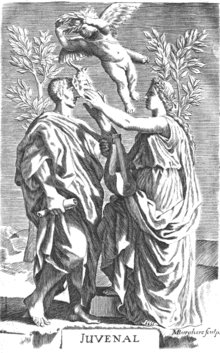Getting chosen to speak at a TED conference is no easy feat.
Attending a TED conference -- as in, sit in the audience -- is a little like applying for college, with a short essay-style
application with questions like "What are you passionate about?" But to
speak at a conference is even harder. TED's content director Kelly Stoetzel and her team review
thousands of candidates and whittle them down to 60-70 speakers for the twice-a-year, week-long conferences.
Who gets chosen to speak? To uphold their famous tagline "ideas worth spreading," TED organizers aren't looking for motivational speakers or self-promoters. Instead, ideal candidates are "inventors, teachers, artists, scientists, change agents, storytellers, big-picture thinkers, prodigies, performers, makers, technologists ... you name it,"
according to 2014's call-to-actionfor TED speakers.
In other words, emphasis is placed on a speaker's ideas, not their public speaking skills. The TED talks are good because the content is good.
But when it comes to view count on those TED talk's online videos, you might notice that some perform way, way better than others -- even when the topics are similar. The question is, why? What makes one TED talk more popular than the next?
Lessons From a TED Talk Study
To uncover why certain TED talks are more popular than others, the folks at
Science of People, a human behavior research lab, recently conducted an intensive experiment on nonverbal communication. For the experiment, they had 760 volunteers watch hundreds of hours of TED talks and answer questions about charisma, intelligence, credibility, and more. With this data, Lead Investigator
Vanessa Van Edwards and her team were able to find patterns among the most popular videos and the less popular ones.
To help control for accuracy, the study stuck to only videos posted on TED.com in 2010 that were between 15-20 minutes long. This way, they all had similar exposure, had about the same amount of time to rack up views, and were moderate in length so as not to skew volunteers' ratings. Each of the 760 volunteers was given only 10 TED talk videos to watch so as not to experience fatigue (which could affect their ratings).
They found that five specific, nonverbal patterns differentiate the most popular TED talks from the least popular ones. And they believe these five patterns show us how to be influential and charismatic.
Let's dig in to their results, as well as the helpful public speaking tips Van Edwards and her team derived from these results.
1) Nonverbal communication matters. A lot.
Think about how you'd normally prepare to deliver a talk. You probably spend the majority of that time preparing what you're going to say, right? I certainly do. But in the future, we might consider spending more time preparing how we're going to deliver our content rather than what we're going to say.
Why? In the Science of People's study, half the participants watched all their videos with sound, and half of them watched the videos on mute. Then, participants were asked to rate each TED speaker on their charisma, intelligence, and credibility. Ratings were exactly the same whether they'd watched the video with sound or without sound.
"In other words, people decide whether they like a TED talk based on the speaker's body language more than their actual words,"
said Van Edwards.
So the next time you deliver a speech in front of an audience, practice standing up straight, purposefully using the space on the stage to move around, and using natural and appropriate hand gestures to improve your delivery.
Speaking of hand gestures ...
2) The more hand gestures, the better.
Van Edwards and her team found a correlation between the number of views on a TED talk and the number of hand gestures. The most popular TED talks had an average of 7,360,000 views and speakers used an average of 465 hand gestures. The least popular TED talks had an average of 124,000 views and speakers used an average of 272 hand gestures.
The more hand gestures, the higher the speaker's charisma rating as well. In general, TED speakers who used fewer than 240 hand gestures scored lower on charisma.
Their suggestion? Use your hands to help illustrate and reinforce your ideas. When you do, you will seem more relaxed, confident, and authoritative.
3) Scripted speeches "kill charisma."
Van Edwards and her team found a correlation between the number of views a TED talk had and the speaker's vocal variety. Participants were asked to rate speakers on the amount of fluctuation in their voice tone, volume, and pitch. The results? The more vocal variety a speaker had, the more views they got. More vocal variety also correlated with higher charisma and credibility ratings.
Vocal variety also correlated with high view count: TED speakers delivering the most popular talks had 30.5% higher vocal variety.
"Speakers who told stories, ad-libbed, and even yelled at the audience (like
Jamie Oliver [did] in his TED talk) captivated the audience's imagination and attention,"
wrote Van Edwards.
It makes sense that a speech with little vocal variety will turn listeners off. Monotone = boring. When you speak in an expressive, energized way, your audience is much more likely to maintain interest -- which probably means they'll like you more, too. So the next time you practice your speech, practice switching up your pace and pitch, and pausing to allow your message to sink in.
More importantly, don't memorize a script. Memorized speeches sound like memorized speeches. Most of the time, memorized speeches don't sound natural -- and, in Van Edwards' words, they actually "kill charisma." Instead of memorizing your whole speech, memorize the key elements you want to cover and allow the rest of it to be flexible and natural.
4) Smiling makes you look smarter.
Van Edwards and her team found that the more time a TED speaker smiled while delivering his or her speech, the higher their perceived intelligence ratings were. Speakers who were rated high in intelligence typically smiled for more than 14 seconds of their entire talk, while speakers rated lower in intelligence typically smiled for 14 seconds or less.
This may be counterintuitive to some of you -- and Van Edwards and her team cite this in their research. "Studies on smiling have found that leaders typically smile less,"
she wrote. "Nonverbal scientists believe that smiling is actually a low power behavior."
Here, she's referring to research from body language scientists like Carol Kinsey Goman, who wrote the book
The Silent Language of Leaders. You might recall
more recent research from Munich's Technische Universitaet that tested how leaders in business and academia are assessed and chosen. The researchers found that male and female managers behaving in exactly the same way were assessed differently -- and they concluded that women should appear less cheerful and more proud to be seen as affective leaders.
But the Science of People's research found that even when TED speakers were talking about a serious topic -- like
Sheryl Sandberg's talk on why we have too few women leaders -- the amount of time smiling still correlated with intelligence ratings.
Their suggestion? "No matter how serious your topic, find something to smile about."
5) You have seven seconds to make an impression.
First impressions are powerful -- even in a 20-minute TED talk. Van Edwards and her team found that participants watching TED talks had already made decisions about how smart, charismatic, and credible the speaker was within seven seconds of watching the video.
Tufts psychologist Nalini Ambady calls this "thin-slicing."
In her research, she found that students are very good at predicting a teacher's effectiveness based on first impressions. Ambady took video recordings of 13 graduate teaching fellows as they taught their classes, and then showed silent 10-second clips, called "thin slices," to students who didn't know the teachers. The students were asked to rate the teachers on variables like "competent" and "confident," and these ratings were combined into individual scores for each teacher. She then compared
that rating to the teachers' end-of-semester evaluations from actual students and found that
the initial ratings correlated highly with the teachers' end-of-semester evaluations. Her findings were the same each time she recreated the study.
The folks at the Science of People were able to replicate Ambady's finding with TED talk videos. To do this, they had one group of participants watch a clip of only the first seven seconds of a TED talk, and then asked them to rate the speaker on charisma, intelligence, and credibility. They had another group of participants watch the entire TED talk and then rate the speaker on the same variables. The ratings for both groups matched.
The takeaway here? Think about how you present yourself, how you walk onto the stage, and how you address your audience. Be sure to deliver an intriguing opening line -- perhaps with a thought-provoking question, a short story, or a joke.
There's no denying what you're wearing makes an impression on your audience as well. In another analysis of 50 TED talks, Van Edwards and her team found that speakers wearing clothing marked as "casual" typically had lower popularity ratings than people wearing clothing that was "business" or "business casual." Interestingly, speakers wearing darker colors got higher ratings than those in lighter colors. So you may want to think twice before donning that bright green sweater.
The next time you prepare to speak in front of an audience, think about the findings in this study and how you can adapt your stage presence and demeanor to make a better, more memorable impression on your audience.













